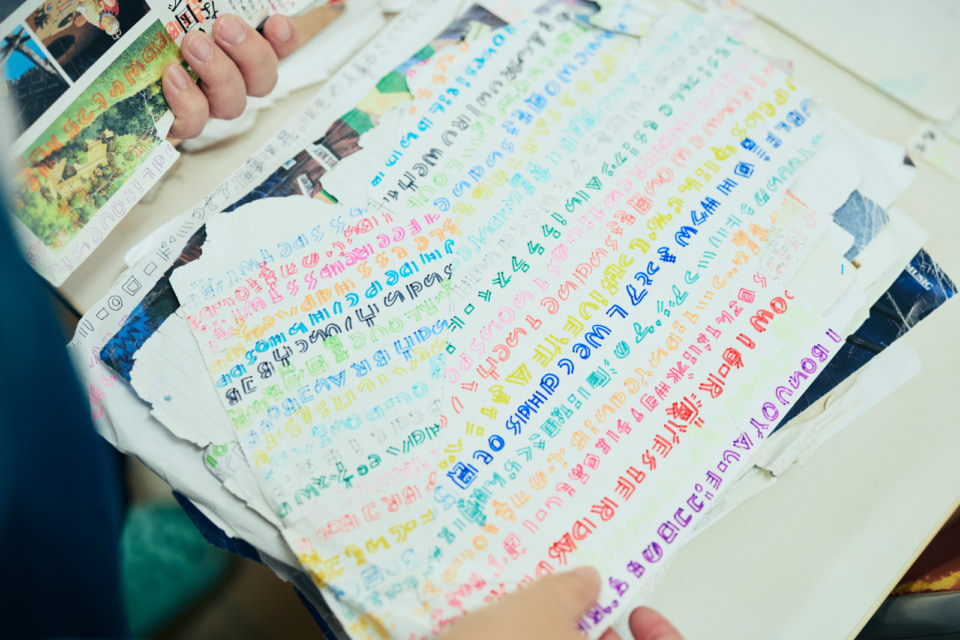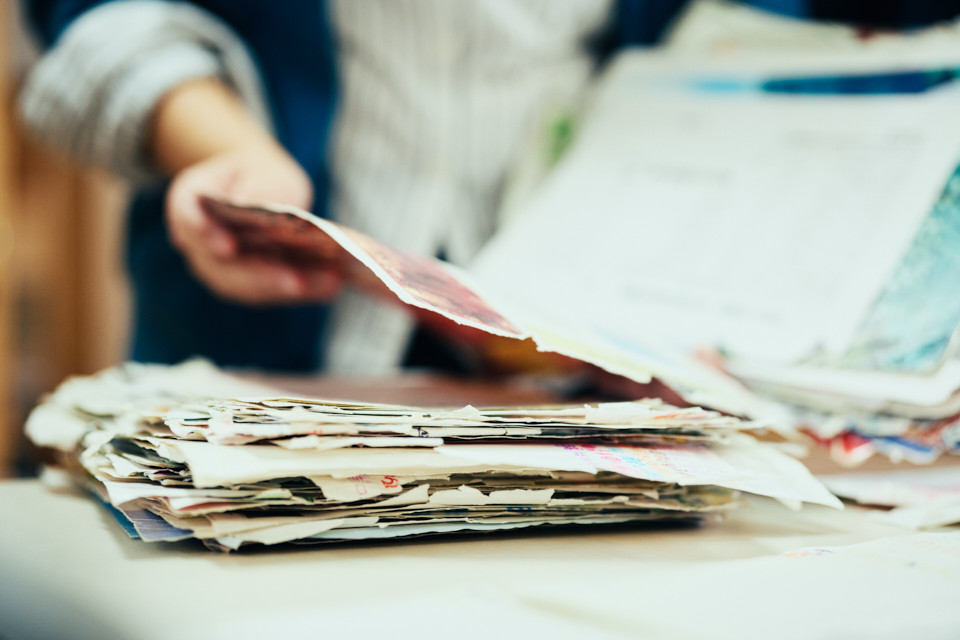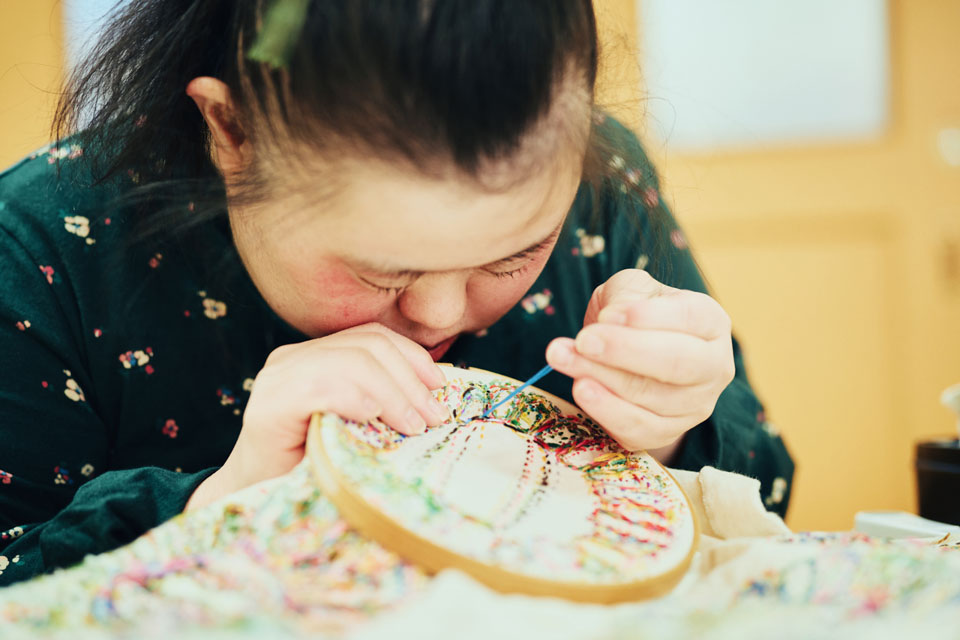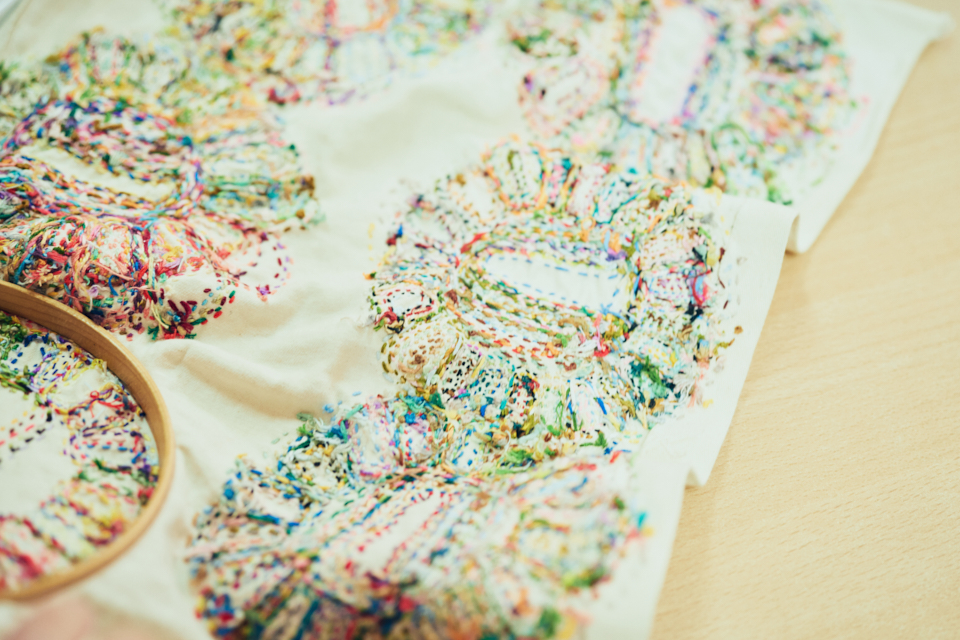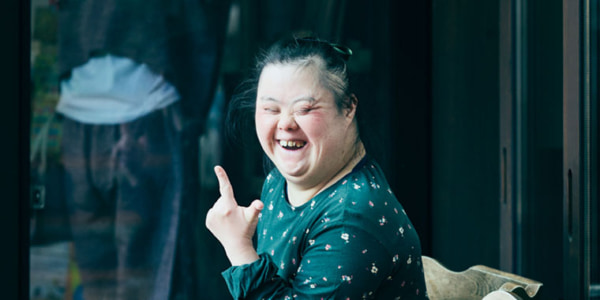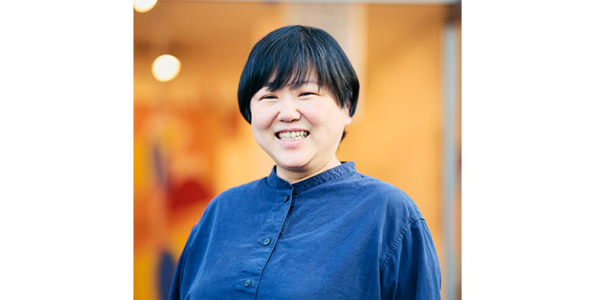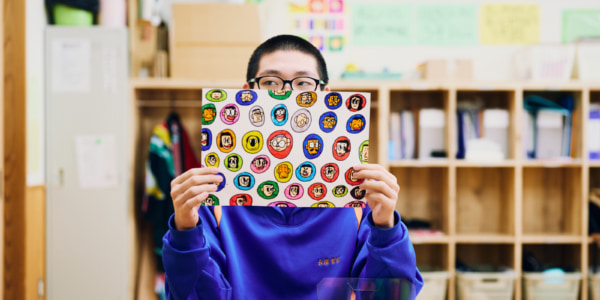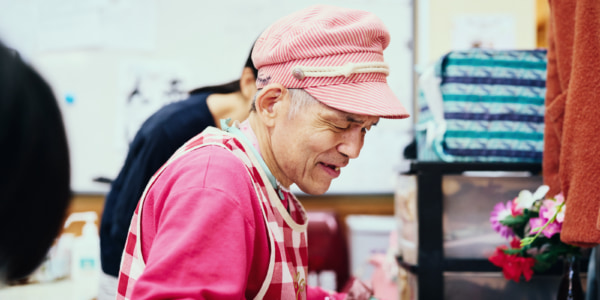Prologue: What emerges from relationships
‘Kizashi and Manazashi’ is an open call exhibition that has been held in Yamagata since 2019. It focuses on the “expressions” (kizashi) of people with disabilities and the “gaze” (manazashi) that follows them. TAKEDA Kazue is one of the people working behind the scenes on the exhibition. She visits welfare facilities and individuals all over Japan to ask about expressive activities that are currently taking place.
What is ‘Kizashi and Manazashi’? Takeda shares an example. At one welfare facility, there was a person who would take equipment outside and line it up in the parking lot on a near-daily basis. Of course, from the perspective of those who wanted to use the equipment, this behavior was nothing but trouble. The staff, however, while perplexed by this person’s behavior, continued to take photographs and document it from their own honest point of view: “Why are they doing this?” They saw in this person’s collection of “mischievous” activities an expression of the person’s will.
“Actions seen as problematic behavior could, when viewed differently, be artistic activity that creates things. This is why the ‘Kizashi and Manazashi’ exhibition introduces the ‘expressions’ (kizashi) that emerge from such relationships,” says Takeda.
![[Photograph]社会福祉法人ほのぼの会〈わたしの会社〉が有する畑に生えていた花。紫色の小花が細長く連なっている。](https://www.diversity-in-the-arts.jp/admin/wp-content/uploads/2024/02/img_endo-01.jpg)
Creative energy that springs from love and the desire to try new things
That morning, we went to Watashi no Kaisha, a facility operated by the social welfare corporation Honobonokai. It is located in the residential area of Toriigaoka, Yamagata City. Attached to the building was a café and bakery operated by the facility, and a faint, pleasant aroma wafted through the air. When we peeked into the bakery from the outside, the workers were getting ready for their day. “They choose good ingredients and make really tasty bread. Let’s stop by later,” Takeda said. On the property across the street, staff were hard at work in the fields.
![[Photograph]〈わたしの会社〉内のアトリエの様子。朝、利用者の方々がテーブルについている。](https://www.diversity-in-the-arts.jp/admin/wp-content/uploads/2024/02/img_endo-02.jpg)
In the facility’s atelier, users who engage in creative activities such as handweaving and drawing were also getting ready to begin work. We found ENDO Aya slowly stacking papers and notebooks on the table. Looking closer, we saw that each sheet of paper was covered in rows of colorful letters. Some papers showed signs of age, with folded edges and faded colors.
Staff member KADOONO Rina explains: “Aya has been writing things like the lyrics to her favorite songs and the names of anime characters for years. She brings these stacks of paper, probably several hundred sheets, in her backpack every day. At the end of the day, she always takes them all home.” Next to the sheets of paper, she had stacked CD lyric booklets in the same manner. Her family bought them for her as a reward for her hard work. “All of these things are packed with Aya’s ‘love.’ I think they serve as good luck charms for her,” says Kadoono. Tidying her space in this manner has become Aya’s pre-work routine.
![[Photograph]テーブルに紙の束や文具がまとまって並べられている様子。](https://www.diversity-in-the-arts.jp/admin/wp-content/uploads/2024/02/img_endo-04.jpg)
However, Aya doesn’t write letters like these at work. For the past few years, she has been passionate about embroidery. Over in the next room, Aya holds a piece of cloth close to her face and quietly moves a needle up and down. Takeda remarks, “The bright colors and detailed touch of Aya’s embroidery remind me of the letters she writes.” When she first started embroidery, she created single lines of thread that lay flat. Now, she stitches in overlapping layers, creating pieces with a flavor that is uniquely hers.
Aya also draws and does handweaving. Sometimes Kadoono will suggest a new material and ask, “Want to try it?” Although Aya furrows her brow and seems reluctant initially, she soon develops her own style of expression in the new medium.
“If it were me, I would freeze and think of reasons not to try it, such as ‘Why did you choose this motif?’ But Aya’s love and desire to try new things spring up as creative energy. I respect her as an artist, and I always look forward to seeing what she will create,” Kadoono says with a straight gaze.
![[Photograph]アトリエ内で上遠野さんと綾さんが向かい合って話している。上遠野さんはしゃがんでテーブルに腕を置き、席につく綾さんと目線を合わせている。](https://www.diversity-in-the-arts.jp/admin/wp-content/uploads/2024/02/img_endo-06-960x800.jpg)




![[Photograph]](https://www.diversity-in-the-arts.jp/admin/wp-content/uploads/2024/02/img_endo-main.jpg)
